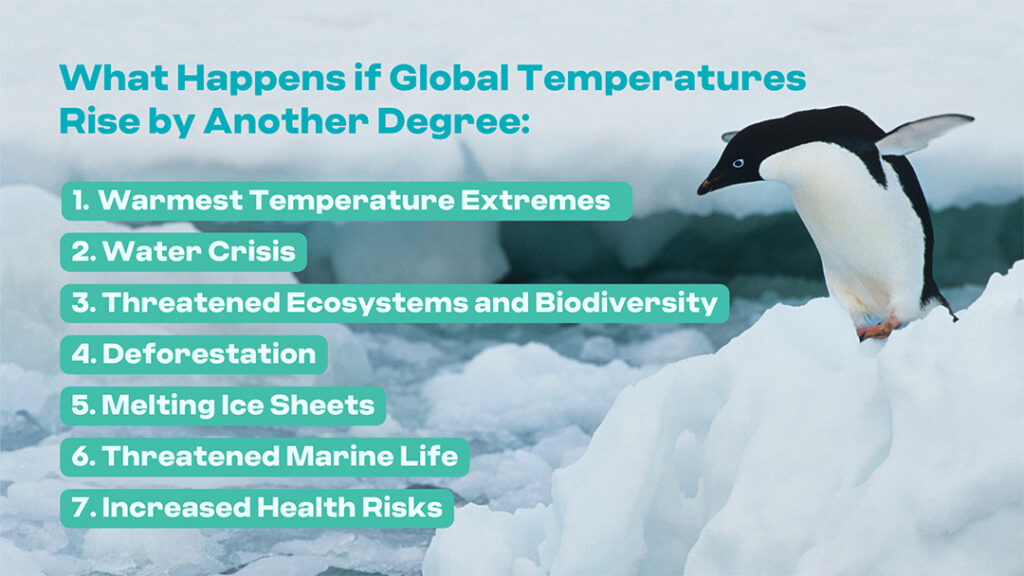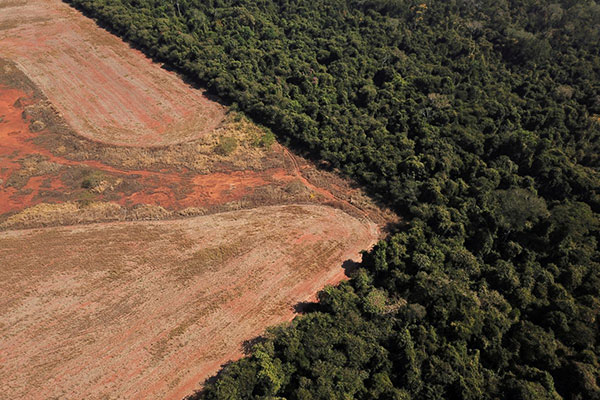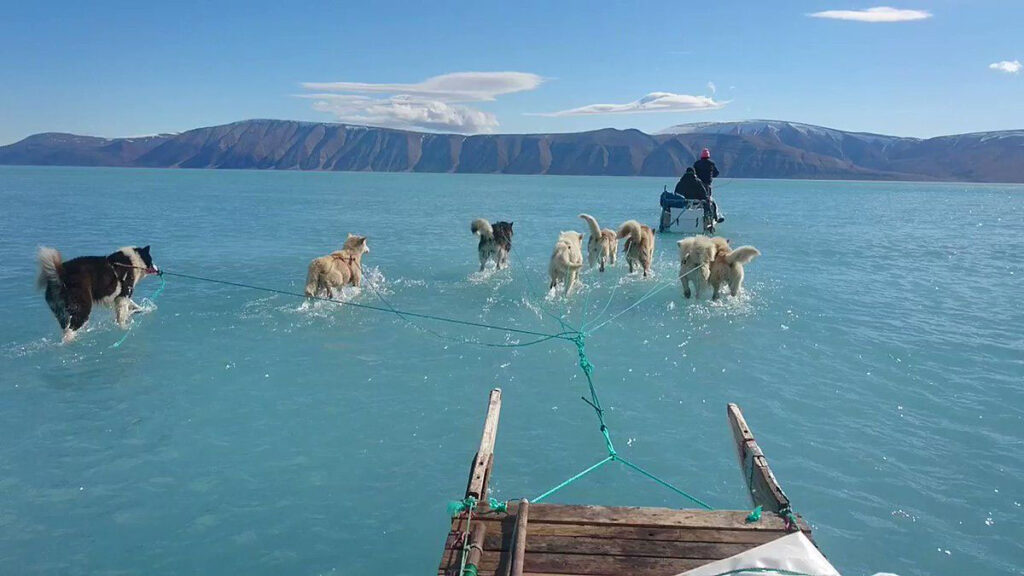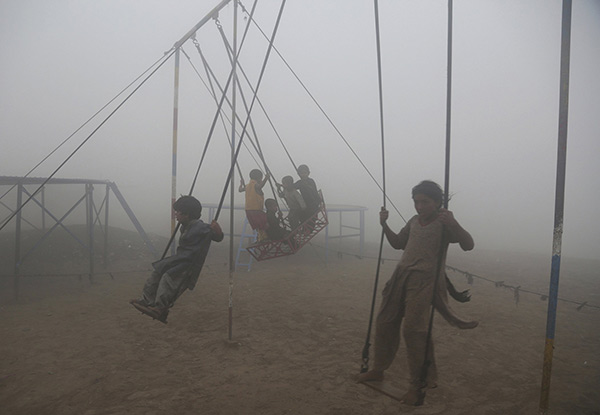You may be thinking, “Why should I care if temperatures rise by another half-degree or one degree? Global temperatures rise and fall all the time… How much harm can one degree actually do?”
Our answer: a lot.
With notable variations by ecosystem, region, and species, large of living beings on earth will be negatively impacted by higher temperature thresholds. An increase of one degree can signify life or death for some species.
For instance, sea turtles may now be driven into extinction due to a rise in the temperature of our beach sands. During incubation, the sand’s temperature plays a vital role in influencing the gender of sea turtle offspring. Warmer sands may lead to a shortage of male sea turtles, as they only hatch at sand temperatures of 27.9°C and below:
Recent heat waves have caused the sand on some Florida beaches to get so hot that nearly every sea turtle born was female https://t.co/fB879eI4T4
— CNN (@CNN) August 4, 2022
It’s a fact that climate change affects every living thing on Earth, and human activities have become one of its significant drivers. Human activity has contributed to a rise in Earth’s average global temperature of around 1°C since the pre-industrial era, a number that is steadily rising by 0.2°C every decade. If global temperatures continue to rise at current rates, global warming is anticipated to hit 1.5 degrees Celsius over pre-industrial levels anytime between 2030 and 2052.
The Intergovernmental Panel on Climate Change released a special report on Global Warming of 1.5 Degrees Celsius on October 2018. The report forecasted the expected effects experience by our planet to be a 1.5°C to 2°C increase in global temperatures. To address the threats brought about by climate change, a legally binding international treaty called the Paris Agreement was adopted in December 2015 by 195 nations with the goal to limit global warming to 1.5°C.
So, what happens if global temperatures rise by another 0.5 to 1 Degree?

1. Record Temperature Extremes
Central and Eastern North America, Central and Southern Europe, the Mediterranean (including Southern Europe, Northern Africa, and the near-East), Western and Central Asia, and Southern Africa will experience the warmest temperatures. We are already experiencing this effect as heatwaves are becoming more severe and more frequent. The World Health Organization has recently announced that at least 15,000 people in Europe have died due to the heat wave that lasted for 3 months from June to August 2022.
2. Water Crises

Image by: The National Geographic Image Collection
Increasing global temperatures are one of the main factors affecting severe droughts, flooding, unpredictable storms and levels of precipitation, and the pollution of water supply, limiting ecosystems’ access to clean water. Some regions will see more heavy rainfall occurrences. This includes Eastern North America, where there will be a greater risk of floods. The high latitudes of the Northern Hemisphere (Alaska, Western Canada, Eastern Canada, Greenland, Iceland, Northern Europe, and Northern Asia), as well as Southeast Asia, are also affected.
3. Threats to Ecosystems and Biodiversity
At 1.5 degrees Celsius warming, the geographic liveable range of 6% of invertebrates, 8% of plants, and 4% of vertebrates will be cut by more than half. At a warming of 2 degrees Celsius, the percentages increase to 18%, 16%, and 8%, respectively.
4. Deforestation

Image by: Amanda Perobelli
Deforestation and wildfires are set to rise, and rainforest biomass will thereby decrease significantly. Boreal forests’ southern boundaries will see a decline in tree population. Additionally, up to half of the woods on Earth have been destroyed by people in the last 8,000 years, primarily to make place for agriculture.
When trees are cut down or burned, they release the carbon that has been stored in their trees and soil. Deforestation has contributed to nearly 30% of all CO2 emissions since 1850. Scientists have discovered that deforestation has resulted in more extreme heat waves in North America and Eurasia because trees emit moisture that cools the air around them.
5. Melting Ice Sheets

Image by: Steffen Olsen/Centre for Ocean and Ice at the/AFP/Getty Images
Instabilities in the Antarctic ice sheet and/or the irreversible melting of the Greenland ice sheet could cause sea levels to rise greater than 6 feet over a period of merely centuries.
6. Threats to Marine Life
As ocean oxygen levels decline, “dead zones”, areas with low oxygen that can’t support most marine life, will increase. Warming oceans, intense storms, and acidification will also cause the decline of coral reefs.
7. Increased Health Risks to Humans

Image by: K.M. Chaudary/AP
The risk of heat-related disease and death will increase. Due to the urban heat island effect, which keeps cities warmer than the nearby rural areas, highly populated areas will be most affected by heat waves.
“What we see isn’t good…”
“What we see isn’t good – impacts of climate change are in many cases larger in response to half a degree (of warming) than we’d expected,” said Drew Shindell, a former research scientist at NASA. “We see a faster acceleration of ice melting, greater increases in tropical storm damages, stronger effects on droughts and flooding, etc. As we calibrate our models to capture the observed responses or even simply extrapolate another half a degree, we see that it’s more important than we’d previously thought to avoid the extra warming between 1.5 and 2 degrees Celsius.”
Since pre-industrial times, our planet has already warmed by about 1°C, and the impacts of this 1-degree temperature rise have been felt everywhere in the world. From rapidly melting glaciers, more frequent heat waves, and increased flooding, we can recognize the fact that the Earth is changing- and it’s not for the better.
Reducing the Rise of Global Temperatures
Every action put towards combating climate change can contribute to a safer and more livable planet for future generations to come. Solving the issues brought about by climate change will require large global efforts, and it isn’t enough to leave it up to the government.
There are multiple things you can do to reduce your personal carbon footprint and join the fight for a greener world. Calculate your personal carbon footprint using our CO2 emissions calculator, consult with a financial adviser to convert your investments into sustainable ones, and choose from our wide array of carbon offset projects to get started on your eco-friendly journey.




